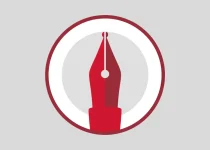All about using free DV converter and recovering files

Have you ever accidentally deleted files that kept your favorite memories? Or you just couldn’t find a way to open those childhood videos? Or maybe you just deleted crucial information stored in a video? Don’t worry, we’ve got you covered.
Now and then, pieces of information get lost due to system updates, malfunctions, and junk cleaning. Sometimes, the lost files aren’t that relevant, but sometimes they keep our favorite childhood memories or sequences of major life events. After losing these files, it’s up to us to get them back. Luckily, there are various programs and software that can help you with this quest. Some of them are free, and some of them are not. We will introduce you both, and all you have to do is to decide which one to use.
But deleting isn’t the only thing that can happen to them. Files can also be incompatible with video editors, or media players on your PC or any other device. And we have the solution for that too. The first thing you can do in situations like this is to convert your DV files using a free DV converter. The other one is to find a program that supports this type of file extension.
But before any specific programs and tools, let’s talk about the DV file format itself.
On this page:
All you have to know about DV files before using a free DV converter
In case you were wondering, DV stands for Digital Video file and represents a file created by a digital camera. Information saved in a DV file is formed of Digital Interface Blocks, known as DIF that can contain audio, video, and metadata. These blocks are multiplexed into 150-block sequences, and each video frame contains 10 or 12 sequences.
This type of file uses lossy compression for video, while audio stays uncompressed. The file uses an algorithm to compresses video based on the discrete cosine transform, using frame by frame. DV file format has the same frame size that is used for 4:3 and 16:9 frame aspect ratios, resulting in different pixel aspect ratios for fullscreen and widescreen video.
It was developed in 1995, but in 2003 DV file extension was complemented by the HDV standard, which uses the same tape format, but with the different video codecs. Although it’s originally developed for tape recording, you can store the material in optical discs, flash memory cards, and hard disk drives as well.
DV file format is not compatible with various programs, apps, or devices, and sometimes you’ll have to convert it. That’s why we should get back to the free DV converter and recovering the lost files story.
More than just another free DV converter
As we previously mentioned, the DV file format is not compatible with different devices like some other popular video formats, such as MP4 or AVI extensions. That’s why this type of file format is often converted. The easiest way to transform your DV files from one file format to another is to use our free DV converter. Not only that three-step process is all you need, but the conversion itself it’s going to be the best possible one.
However, if you’re not interested in converting your files using free online tools, you should know programs that open this type of file extension. And just because Converter365 is not just another free DV converter you can find online, we’ll tell you all you need to know about it.
Let’s start with Windows users and programs supported by their OS. First, we have File Viewer Plus. Besides viewing files, you can also use this program as a free DV converter. According to developers of this tool, it supports more than 300 types of file formats.
Next, there is a VideoLAN VLC media player – free and open-source multimedia player. Plus, this one is compatible not just with Windows and Mac devices, but with Linux as well. You can download it for free, and the installation is quite easy as well. Another tool you can use is Microsoft Windows Movie Maker. This app is free to use and download, at least when it comes to their basic version.
Now let us present to you one of the most popular programs for video editing and viewing – Adobe Flash Professional CC. It supports numerous file formats, and it’s compatible with different operating systems. It is also a favorite tool for every designer and visual artist. Similar video editors to Adobe tool are CyberLink PowerDirector 15 Ultra and CyberLink PowerDVD 16. You can also use them for editing and exporting files with a different file extension.
On the other hand, all Mac users are well-aware of the Apple QuickTime Player’s possibilities, and opening DV files is one of them. The good news is that QuickTime Player is available to Windows users, as well. Another Apple’s tool is iMovie. We guarantee you this tool will not be just a free DV converter, it will become the main reason for starting your video editing carrier too.
Also, any Mac owner can use Roxio Toast and Roxio Popcorn. They are basically the same, except the Popcorn is a slightly older version. Both of these Roxio apps are user-friendly and will allow you to convert files from one format to another.
Now that you know the most popular apps and tools that will help you with file conversion, it’s time to show you how to recover deleted files. At least those with a DV extension.
Yes, it is possible to recover deleted DV files
Have you ever wondered how many memories are saved in the DV file format? Probably a lot. That’s why it’s good to have some kind of a backup plan, just in case you delete the DV file unintentionally, or it gets deleted after different device failures, updates, or junk cleaning.
Luckily, there are a few ways to recover deleted files. Except for the old fashioned search in a recycle bin, you can use a Disk Drill recovery app. It is free software you can easily download and use.
This app can work on different devices, including internal and external hard drives, memory cards, iPhones, USB flash drives, etc. The impressive feature of Disk Drill is an option that allows you to use images to recover DV files. It can create image files with a bit-by-bit copy of the original source. It also saves image files using some of the most common formats, and you can open files later with many other tools.
Another program that will help you with your deleted files is Hetman Partition Recovery. This software allows users to search and recover original files and folder structures from those deleted volumes. It can be used in all versions of Windows, Mac OS, Linux, and Unix, which makes it extremely compatible with all operating systems. All you have to do is to run Hetman Partition Recovery, and it will automatically scan and display all hard disks and removable drives, physical and local disks connected to this PC. The only downside of this app is that it’s not free.
You can find a lot of apps and tools that can recover your files, regardless of their format. Just make sure that all of them are safe and recommended.
Unfortunately, if none of the tools can find your files, they are probably lost forever. Just remember, before you lose all your hopes, try everything.



